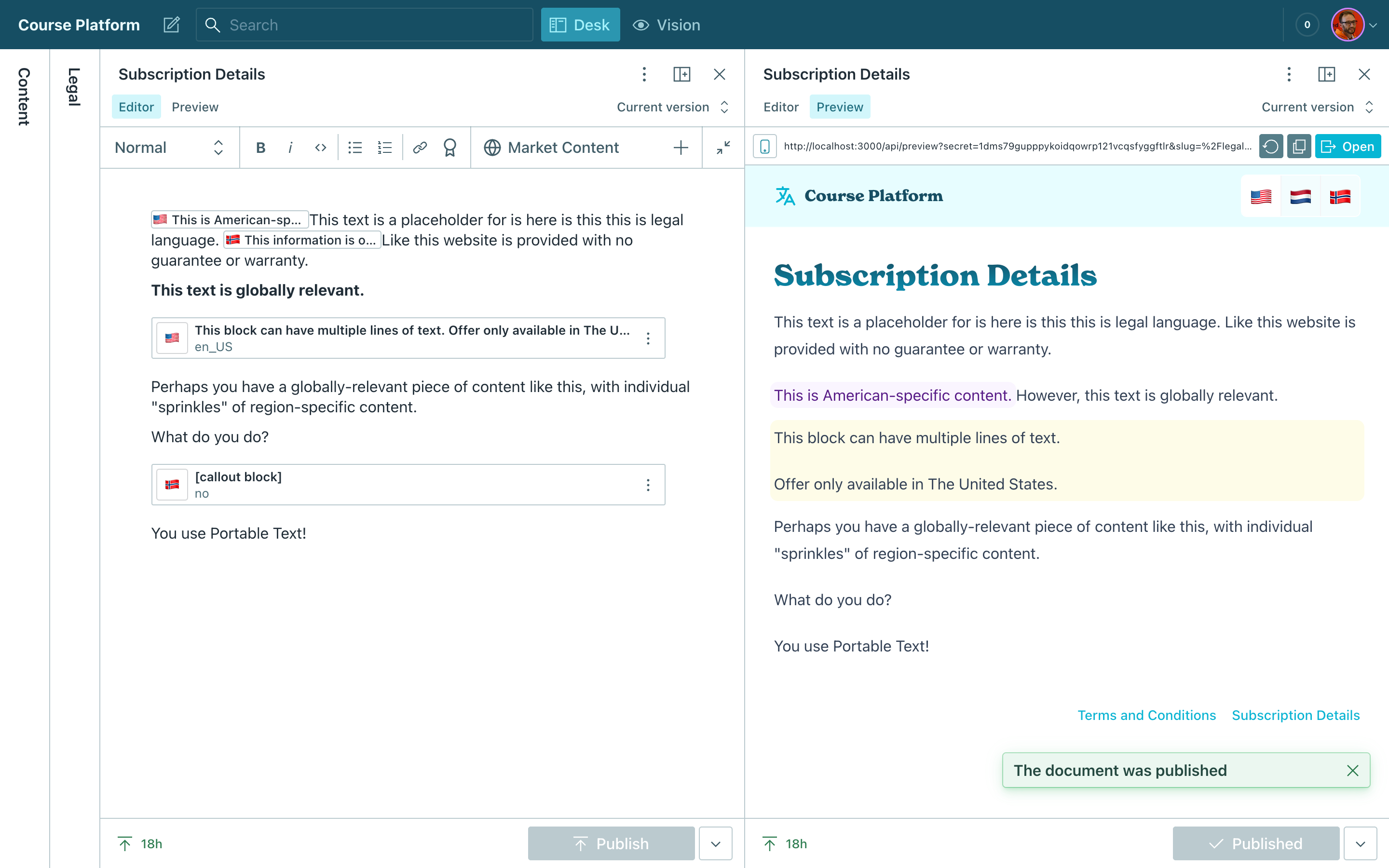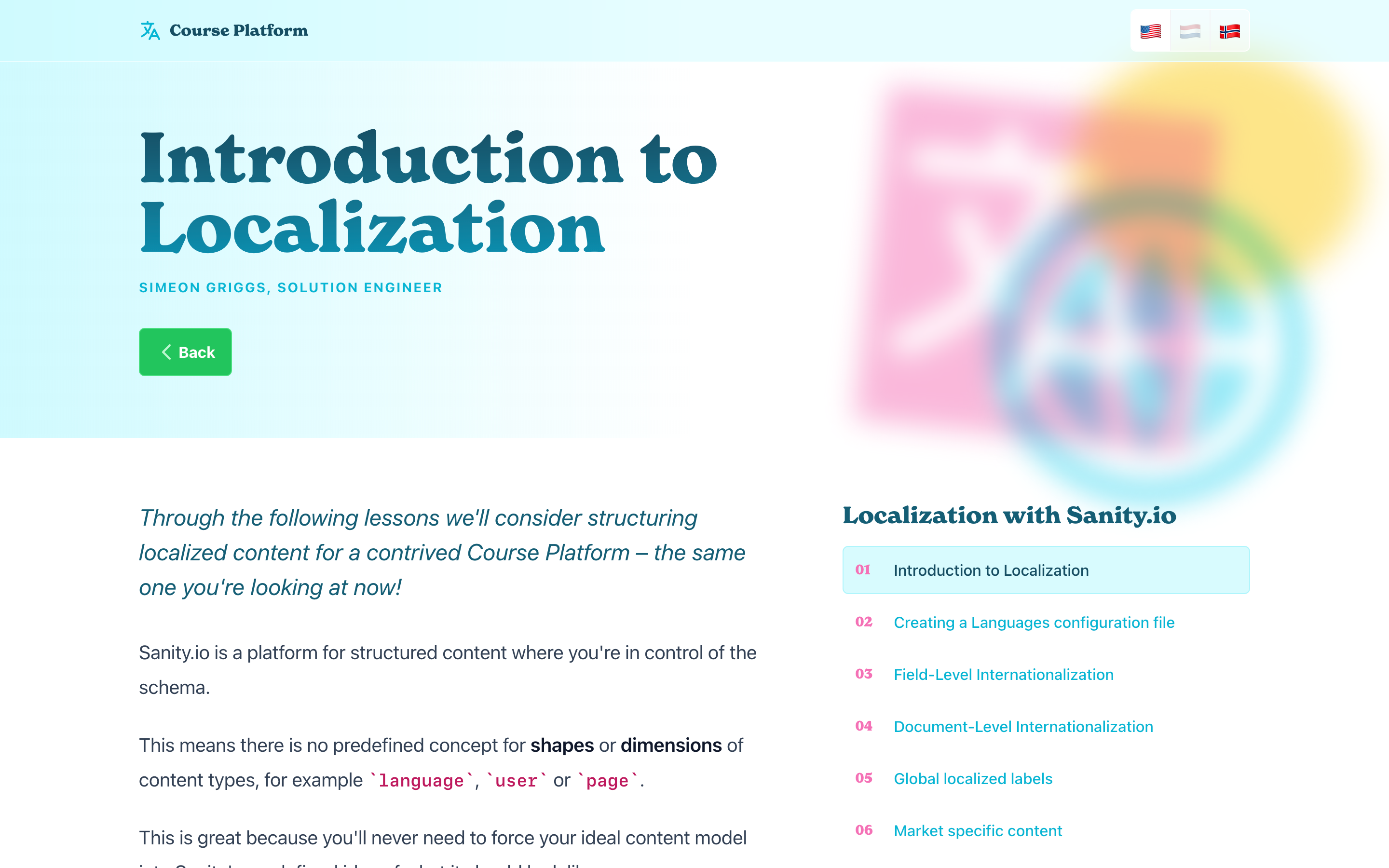Sanity Studio and Next.js 13 front-end demonstrating multiple strategies for Localization with Sanity
Read more about Localization with Sanity in the docs.
➡️ Watch a 4 minute Studio walkthrough on YouTube
Each schema contains a unique strategy:
Document-level internationalization using the @sanity/document-internationalization plugin. The documents in this schema are all text and use Portable Text so it is best to translate the entire document – not just the fields within them.
Field-level internationalization of object fields, using the @sanity/language-filter plugin. Only some fields in this schema require localization so we have a mix of localized objects (title and slug) as well as global fields.
This document type also uses the Transifex Plugin to create translations for the title and slug fields.
Field-level internationalization of array fields using sanity-plugin-internationalized-array. Again only some fields are localized and some are global. This plugin may be more beneficial if you have more than four languages to save on the number of unique attributes in a dataset.
A singleton document with an array of key-value pairs. Useful for globally translated content for example buttons and labels. This uses the Google Translate plugin which can automatically translate from the base language field directly in the Studio.
A demonstration of writing multiple languages or market-specific content within a single document and filtering the content at the time of the query. Allows authors to create personalized content for markets without handling multiple fields or documents.

